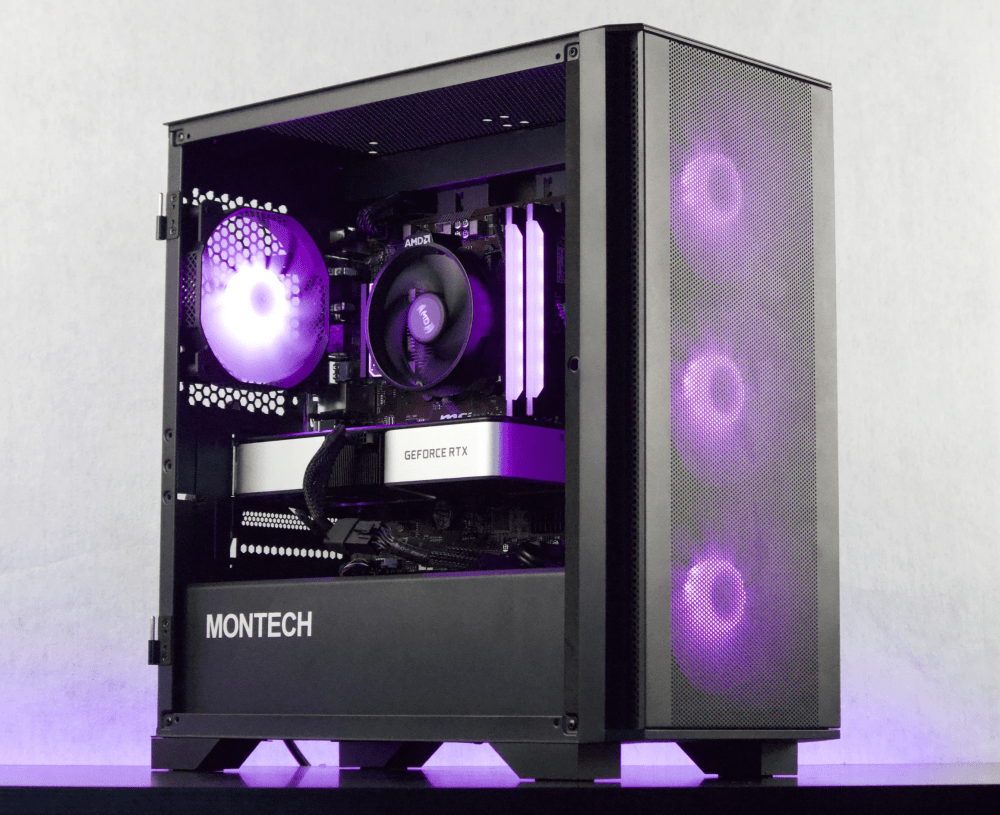Looking to upgrade your CPU? Check out Jawa for killer deals on new and used processors.
Are you tired of your computer overheating and causing performance issues? Excessive CPU temperature can not only reduce the lifespan of your processor but also lead to system instability and unexpected shutdowns. In this blog post, we will explore the causes and symptoms of CPU overheating, the importance of monitoring CPU temperature, and most importantly, how to lower CPU temperature effectively. Whether you're a gamer, a content creator, or simply a regular computer user, understanding how to keep your CPU cool is essential for maintaining optimal performance. So let's dive in and discover the best strategies to lower your CPU temperature and keep your computer running smoothly.
Understanding CPU Overheating: Causes and Symptoms
CPU overheating can occur due to various factors, and it's crucial to understand the causes and symptoms to effectively address the issue. By identifying the root cause, you can take appropriate measures to lower your CPU temperature and prevent any potential damage.
Causes of CPU Overheating
-
Insufficient Cooling: Inadequate cooling mechanisms, such as a faulty or inefficient CPU cooler, can lead to increased CPU temperatures. Dust accumulation on cooling components, improper airflow within the computer case, or a malfunctioning fan can also contribute to overheating.
-
Overclocking: Overclocking refers to pushing your CPU beyond its recommended clock speed, resulting in increased heat generation. While it can enhance performance, improper overclocking without sufficient cooling can cause the CPU to overheat.
-
Poor Thermal Conductivity: The thermal conductivity between your CPU and its cooler plays a significant role in heat dissipation. Low-quality or improperly applied thermal paste can hinder heat transfer, leading to higher temperatures.
-
Inadequate Power Supply: Insufficient power supply to the CPU can cause it to work harder, generating more heat. This can occur if your power supply unit (PSU) is underpowered or if there are issues with the power delivery system.
-
Inefficient Case Design: The design of your computer case can impact the airflow and cooling efficiency. Cases with poor ventilation, cramped spaces, or insufficient fan placements can contribute to CPU overheating.
Symptoms of CPU Overheating
-
Random Shutdowns: If your computer shuts down unexpectedly, especially during CPU-intensive tasks like gaming or video rendering, it may be due to overheating. The CPU's thermal protection mechanism triggers a shutdown to prevent damage.
-
Performance Issues: Overheating CPUs often experience performance degradation. You may notice slow response times, laggy performance, or frequent freezes and crashes while using resource-intensive applications.
-
Excessive Fan Noise: When the CPU temperature rises, the cooling fans try to compensate by spinning faster. If you notice unusually loud fan noise even during normal usage, it could indicate high CPU temperatures.
-
High Temperature Readings: Monitoring software can display real-time CPU temperature readings. If the readings consistently exceed safe temperature thresholds (varies depending on the CPU model), it indicates a potential overheating problem.
Understanding the causes and symptoms of CPU overheating is the first step towards resolving the issue. In the following sections, we will delve deeper into monitoring CPU temperature, improving CPU cooling, underclocking or undervolting options, and how to maintain optimal CPU temperature for long-lasting performance.
Monitoring Your CPU Temperature
Monitoring CPU temperature is essential to keep track of how your processor is performing and to detect any potential overheating issues. By regularly monitoring the temperature, you can take necessary actions to prevent damage and maintain optimal CPU performance. In this section, we will explore the importance of monitoring CPU temperature, the tools available for tracking it, and how to interpret the temperature readings effectively.
Why Monitoring CPU Temperature is Important
-
Prevent Overheating: Monitoring CPU temperature allows you to identify when the temperature reaches dangerous levels. This enables you to take immediate action to cool down your CPU before it causes damage, such as system instability or hardware failure.
-
Optimize Performance: Excessive heat can negatively impact your CPU's performance. By monitoring the temperature, you can ensure that your CPU is operating within the recommended temperature range, allowing it to perform optimally and avoid any thermal throttling.
-
Extend Lifespan: Continuous exposure to high temperatures can shorten the lifespan of your CPU. By keeping a close eye on the temperature, you can implement effective cooling strategies to minimize heat stress and prolong the longevity of your processor.
Tools for Tracking CPU Temperature
-
BIOS/UEFI: Most modern motherboards provide built-in temperature monitoring features accessible through the BIOS/UEFI settings. This allows you to check CPU temperature directly from the system firmware.
-
Operating System Tools: Operating systems like Windows, macOS, and Linux offer built-in tools to monitor CPU temperature. For example, Windows users can utilize the Task Manager or third-party software like Core Temp or HWMonitor.
-
Third-Party Software: Numerous third-party applications specialize in monitoring CPU temperature. These software options offer advanced features such as real-time temperature readings, historical data, and customizable alerts. Examples include Open Hardware Monitor, SpeedFan, and NZXT CAM.
Interpreting CPU Temperature Readings
-
Safe Temperature Range: Different CPUs have varying safe temperature ranges. It's essential to refer to the specifications provided by the CPU manufacturer to determine the acceptable temperature limits. Typically, temperatures below 80-85 degrees Celsius (176-185 degrees Fahrenheit) are considered safe for most CPUs.
-
Idle and Load Temperatures: CPUs operate at different temperatures depending on the workload. Idle temperatures refer to the CPU temperature when the system is at rest, while load temperatures indicate the temperature under heavy usage. Monitoring both values helps evaluate the cooling efficiency and identify potential issues.
-
Temperature Fluctuations: CPU temperature readings can fluctuate based on various factors like ambient temperature, workload, and cooling system efficiency. It's important to observe trends and identify any abnormal spikes or sustained high temperatures that may indicate cooling problems.
By monitoring your CPU temperature regularly using appropriate tools and understanding how to interpret the readings, you can effectively manage and address any temperature-related concerns. In the next section, we will explore methods to improve CPU cooling to lower the temperature effectively.
Improving CPU Cooling
Improving CPU cooling is crucial for maintaining optimal temperature levels and preventing overheating. By implementing effective cooling strategies, you can ensure that your CPU operates within safe limits, improving its performance and longevity. In this section, we will discuss various methods to enhance CPU cooling, including choosing the right CPU cooler, optimizing airflow in your computer case, and the role of thermal paste in cooling efficiency.
Choosing the Right CPU Cooler
-
Air Coolers: Air coolers, also known as heatsinks, are the most common and cost-effective cooling solutions. They consist of a metal heatsink and a fan that dissipates heat away from the CPU. When selecting an air cooler, consider factors such as compatibility with your CPU socket, size constraints in your computer case, and the cooling performance required for your CPU's thermal design power (TDP).
-
Liquid Coolers: Liquid cooling systems, commonly known as all-in-one (AIO) coolers, offer superior cooling performance compared to air coolers. They feature a radiator, pump, and tubes filled with coolant, which absorbs heat from the CPU and dissipates it through the radiator using fans. Liquid coolers are ideal for overclocking or high-performance systems, but they can be more expensive and require additional installation steps.
-
Custom Water Cooling: Custom water cooling setups provide the highest level of cooling performance but require more expertise and maintenance. These setups involve individually selecting components like water blocks, radiators, pumps, and tubing to create a custom cooling loop. Custom water cooling is typically reserved for enthusiasts seeking maximum cooling potential and aesthetics.
Optimizing Airflow in Your Computer Case
-
Proper Fan Placement: Ensure the correct placement of fans in your computer case to promote efficient airflow. Intake fans should be positioned at the front or bottom of the case, while exhaust fans should be placed at the rear or top. This setup helps create a steady flow of cool air entering the case and warm air exiting it, preventing heat buildup.
-
Removing Obstructions: Ensure that there are no obstructions blocking the airflow inside your computer case. Remove any unnecessary cables, dust, or debris that may hinder the flow of air. This allows the cooling components to operate at their maximum efficiency.
-
Cable Management: Proper cable management helps improve airflow by reducing clutter and allowing smooth airflow through the case. Use cable ties, routing holes, and cable management accessories to organize and route cables away from the path of airflow.
-
Additional Case Fans: Depending on your system's thermal requirements, you may consider adding extra case fans to improve airflow. This can help in directing cool air towards critical components such as the CPU and GPU, enhancing overall cooling efficiency.
The Role of Thermal Paste in CPU Cooling
-
Thermal Paste Application: Thermal paste, also known as thermal compound, is a substance applied between the CPU and the cooler's base to ensure optimal heat transfer. It fills microscopic gaps and imperfections, improving thermal conductivity. When applying thermal paste, use an appropriate amount (usually a small pea-sized dot) and ensure even distribution to achieve optimal cooling performance.
-
Thermal Paste Replacement: Over time, the thermal paste may dry out or lose its effectiveness, leading to decreased cooling efficiency. It's recommended to replace the thermal paste every few years or when you disassemble and reassemble your CPU cooler.
By choosing the right CPU cooler, optimizing airflow in your computer case, and properly applying thermal paste, you can significantly improve CPU cooling. In the next section, we will explore the option of underclocking or undervolting your CPU as a means to reduce heat generation and lower CPU temperature.
Underclocking or Undervolting Your CPU
Underclocking or undervolting your CPU are two techniques that can help lower heat generation and reduce CPU temperature. These methods involve adjusting the operating frequency or voltage supplied to the CPU, allowing it to run at lower power levels. In this section, we will explore what underclocking and undervolting mean, how to safely implement these techniques, and the risks associated with them.
What is Underclocking and Undervolting?
-
Underclocking: Underclocking involves reducing the clock speed at which your CPU operates. By lowering the clock speed, the CPU generates less heat since it performs fewer calculations per second. Underclocking can be useful when dealing with excessive heat or if you want to prioritize power efficiency over maximum performance.
-
Undervolting: Undervolting refers to reducing the voltage supplied to the CPU. The CPU requires a specific voltage to operate, but often manufacturers apply a higher voltage as a safety margin. By lowering the voltage while maintaining stability, you can reduce power consumption and heat output.
How to Underclock or Undervolt Your CPU Safely
-
BIOS/UEFI Settings: Access your computer's BIOS or UEFI settings by restarting your system and pressing a specific key during boot (usually Del, F2, or Esc). Within the settings, locate the options related to CPU frequency or voltage control. Adjust the values to lower the clock speed or voltage, depending on your desired outcome. Save the changes and exit the BIOS/UEFI.
-
Software Utilities: Some software utilities allow you to underclock or undervolt your CPU within the operating system. These utilities provide a user-friendly interface to adjust clock speeds or voltages without accessing the BIOS/UEFI. Examples of such software include Intel Extreme Tuning Utility (XTU) for Intel CPUs and AMD Ryzen Master for AMD CPUs.
Understanding the Risks of Underclocking and Undervolting
-
Performance Impact: Underclocking your CPU will result in reduced performance since it operates at lower frequencies. Consider the trade-off between lower temperatures and decreased performance to ensure it aligns with your requirements.
-
Stability Issues: Underclocking or undervolting too aggressively can lead to system instability, causing crashes, freezes, or even data corruption. It is essential to find the right balance between temperature reduction and system stability.
-
Warranty and Compatibility: Modifying CPU settings, including underclocking and undervolting, may void your CPU's warranty. Additionally, not all CPUs or motherboards support these features, so it's important to check compatibility before attempting any changes.
-
Testing and Monitoring: After underclocking or undervolting, it's crucial to thoroughly test your system's stability under different workloads. Monitor the CPU temperature and ensure it remains within safe limits. If you encounter any issues, consider reverting to default settings.
Underclocking or undervolting your CPU can be an effective way to lower CPU temperature, but it's important to understand the potential risks and limitations. In the next section, we will explore methods for maintaining optimal CPU temperature through regular maintenance and performance optimization.
Maintaining Optimal CPU Temperature
Maintaining optimal CPU temperature is crucial for the long-term health and performance of your processor. In this section, we will discuss the importance of regular maintenance for your PC, balancing performance and temperature, and establishing a safe CPU temperature range.
Regular Maintenance of Your PC
-
Dust Removal: Dust accumulation can hinder airflow and impede the cooling efficiency of your computer components, including the CPU cooler. Regularly clean your computer case, fans, and heatsinks using compressed air or a soft brush to remove dust and maintain optimal airflow.
-
Fan Maintenance: Fans are critical for cooling your CPU and other components. Ensure that the fans are clean, free from obstruction, and functioning properly. Replace any faulty or noisy fans to maintain efficient cooling.
-
Thermal Paste Replacement: Over time, thermal paste can dry out or lose its effectiveness, reducing heat transfer capabilities. Periodically check and replace the thermal paste between the CPU and the cooler to ensure optimal cooling performance.
Balancing Performance and Temperature
-
Optimal Cooling Profiles: Many motherboards offer different cooling profiles in the BIOS/UEFI settings. These profiles determine fan speeds and cooling strategies based on temperature thresholds. Experiment with different profiles to find the right balance between cooling performance and noise levels.
-
CPU Performance Settings: Adjusting the performance settings of your CPU can help manage temperature. For example, reducing the CPU's maximum clock speed or enabling power-saving features like Intel SpeedStep or AMD Cool'n'Quiet can help lower heat generation during normal usage.
Establishing a Safe CPU Temperature Range
-
Manufacturer Guidelines: Refer to the CPU manufacturer's specifications to determine the recommended safe temperature range for your specific processor. This range may vary depending on the model and generation of the CPU.
-
Monitoring Software: Utilize monitoring software to keep an eye on your CPU temperature. Set up alerts or notifications to warn you if the temperature exceeds safe limits, allowing you to take immediate action.
-
Load Temperature Considerations: CPU temperatures under heavy load will be higher than during idle or light usage. Ensure that the load temperatures remain within the safe range to avoid any potential damage.
By regularly maintaining your PC, balancing performance and temperature, and understanding the safe temperature range for your CPU, you can ensure optimal CPU temperature and extend the lifespan of your processor. With these strategies in mind, you can enjoy reliable performance while keeping your CPU cool.





